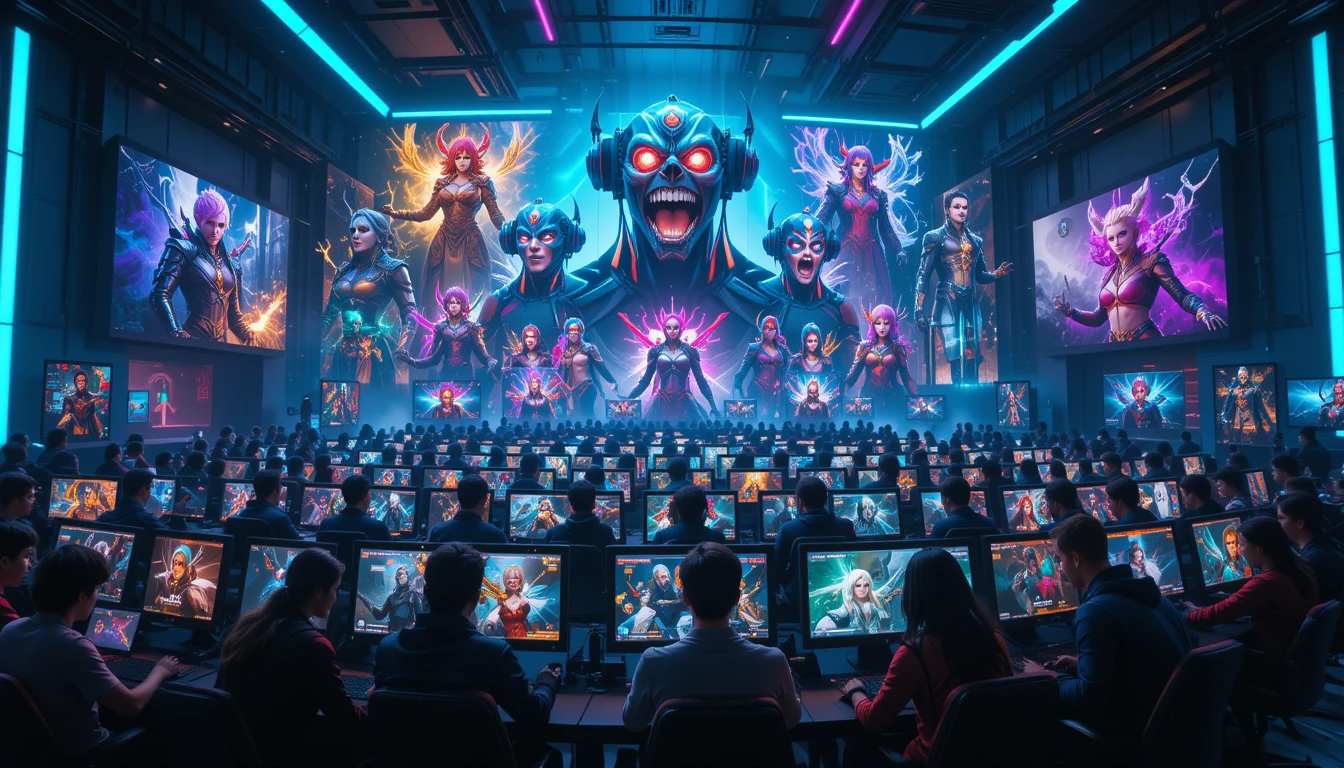In an era when full-price AAA games can cost $60, $70, or even more, the world of free gaming has become more important—and exciting—than ever. Gaming free isn’t just about saving money; it’s about access, creativity, community, and discovering gems you might otherwise never try. In this article, we’ll explore what “gaming free” means (and the many ways that games can be free), discuss benefits and pitfalls, showcase good examples, and give tips on how to find great free games in 2025 (and beyond).
What Does “Gaming Free” Mean?
“Gaming free” or “free gaming” can mean different things, depending on platform, monetization model, and what the user expects. Key definitions to know:
-
Free to Play (F2P): Games that you can download and play without an upfront cost. Often there are optional in-game purchases (skins, cosmetics, battle passes, etc.).
-
Freemium: A subset of F2P where the base game is free but progression, enhancements, or quality-of-life features require purchase.
-
Completely Free / No Cost: Games that have no purchase requirement, no (or very minimal) microtransactions, possibly community developed or supported.
-
Giveaways / Promotions: Paid games temporarily offered for free through digital stores or platforms. Examples: Epic Games Store weekly freebies, or special holiday deals.
-
Ad-Supported Free Games: Games that are free but include adverts; players may get rewards by watching ads.
Each model has trade-offs. Free doesn’t always mean “without cost,” since the cost might be time, ads, or optional payments.
Why Free Gaming Is Valuable
Free gaming has many advantages beyond just saving money. Let’s break them down.
1. Lower Barrier to Entry
One of the biggest benefits is that you don’t need money up front. This means:
-
More players can try games.
-
More experimentation: indie developers or players exploring niche genres can get in without risk.
-
Accessibility: people with limited budgets or in countries with higher exchange rates benefit greatly.
2. Community Building & Social Connection
Many free games incorporate multiplayer modes, chat, guilds, leaderboards, etc. They help people connect globally without needing to invest heavily. Free games often have large player bases — which means easier matchmaking, vibrant communities, and content creation (streams, mods, guides) flourish.
3. Discovery & Innovation
Indie devs often use free or freemium models to get visibility. Some of the most interesting gameplay ideas arise in smaller, lower-risk projects that are free or partly free. Players can experience more creative mechanics, genre blends, or experimental styles this way.
4. Cognitive, Psychological, and Health Benefits
While gaming often gets criticized, free games offer benefits:
-
Stress relief and relaxation.Â
-
Improves hand-eye coordination when gameplay is action or reflex oriented.Â
-
Boosts memory, concentration, logical thinking, problem solving.Â
-
Provides mental stimulation: tactical/strategy games, puzzles, etc.
5. Flexibility & Variety
Free games are available on many platforms: PC, mobile, browser, consoles. Also, genres range widely (MMOs, shooters, casual/puzzle, battle royales, strategy, etc.). So whatever your mood, chances are there’s something free that fits.
The Trade-Offs: What to Watch Out For
“Free” isn’t perfect. There are downsides, and knowing them helps you avoid frustration.
1. Monetization Pressure & Pay-to-Win Risks
In many free-to-play titles, optional purchases give players advantages (speed, power, rare items). Sometimes these become crucial to stay competitive → that’s “pay-to-win.” If you don’t spend, progress may be slow or unbalanced.
2. Ads & Disruption
Ad-supported games may have intrusive ads, forced videos, or rewarded ads (watch to get bonus). While sometimes tolerable, if overused they can harm enjoyment.
3. Quality Variation
Since the cost of entry is low, many games are rushed, casual, or lack polish. Some free games are amazing; many are mediocre. Separating the gems from the chaff takes time, reviews, word-of-mouth.
4. Time Costs
Even if a game is free, advancing may require grinding. Sometimes the time investment to unlock content is very high in lieu of charging money. This is a kind of “non-monetary” cost.
5. Security/Trust Issues
If downloading free games from unverified sources, risks include malware, piracy, broken software, etc. Always use official stores or trusted communities.
Free Gaming in 2025: What’s New & Trending
Let’s look at what “gaming free” looks like in 2025. Some of the key trends, popular titles, and platforms.
Platforms & Stores with Free Offers
-
Epic Games Store continues to give away free games weekly. You can claim them and keep them in your library.Â
-
Steam has many top free games—both “free to play” multiplayer titles and free single-player games. Reviews and curated lists help.Â
-
Microsoft Store / Windows PC offers a wide range of free games, including casual, puzzle, action, etc.Â
-
Browser game sites (e.g. CrazyGames) where you can play instantly without download, on mobile or desktop.Â
Popular Free Titles & Genres
Here are genres/titles that are especially popular among free games in 2025:
-
Battle Royale / Hero Shooters: these often use the free model with cosmetic microtransactions.
-
MMOs / Open World Free Games: large player bases, social features.
-
Strategy / Simulation / Puzzle Casual Games: low demand on hardware, easy to pick up.
-
Gacha / Collectible / Character-Based RPGs in mobile gaming.
Some specific free games being popular:
-
Warframe, Apex Legends, Overwatch 2.Â
-
Dota 2 is still a strong example of free that competes deeply.Â
-
As of recent, some “best free PC games in 2025” lists include games across competitive, casual, co-op, and narrative genres.Â
Monetization Trends
-
Season / Battle Passes: many free games use recurring periods (seasons) with unlockable content, cosmetics, challenges.
-
In-App Purchases (IAP): buying skins, boosters, cosmetics. It’s standard now in free/mobile games.
-
Ads + Reward Systems: ads may grant small bonuses, extra lives, or skip timers.
-
Microtransactions, carefully balanced—but in many popular free games, a lot of value is still possible without spending much (though “free” experience can differ by game).
How To Find Good Free Games / How to Maximize Value
If you want to get the most from gaming free (get high quality, avoid frustrations), here are strategies and tips.
1. Follow Deals & Giveaways
-
Keep an eye on stores (Epic, Steam, Microsoft, console stores) for free freebies or limited-time promotions.
-
Subscribe to newsletters or follow social media/accounts that post about free game deals.
-
Use aggregators or “free game tracking” sites to get notifications.
2. Read Reviews & Watch Gameplay
Especially for free games, don’t just download based on hype. Look at:
-
Player reviews / ratings.
-
Whether monetization is heavy or “pay to win.”
-
Gameplay videos or streams to see how it plays in practice.
3. Check Hidden Costs
Even “free” can cost in time, ads, or optional purchases.
-
See how often ads appear, how intrusive they are.
-
Look at how much grinding is required.
-
See if critical content is locked behind paywalls.
4. Consider Device & Hardware
Some free games are lightweight; others are very demanding. On mobile or browser, joule-power or RAM may limit experience. On PC/console, check system requirements even for free games.
5. Balance Your Time
Free games are tempting, and sometimes many of them pile up in your library. Prioritize what you’ll actually play. Don’t let free games become clutter.
6. Support Developers Where Possible
If you like a free game, support it—buy skins, pass, cosmetic items, or just leave good reviews or share it. This ensures developers can keep the game updated and maybe make more free content.
Examples of Free Games & Platforms Today
Here are specific examples to illustrate “gaming free” in action.
Free Games on Big Stores
-
Epic Games Store: gives away weekly games to claim for free.Â
-
Steam: has a curated list of best free games in 2025, across genres like hero shooters, strategy, etc.Â
-
Microsoft Store (PC / Xbox): many top free games listed; casual, puzzle, shooters, etc.Â
Browser & Casual Free Games
-
CrazyGames: thousands of online casual / puzzle / .io games, playable directly in browser with no install.Â
-
Other browser-based games are great for quick play sessions.
Free-to-Play & Popular Titles
-
Titles like Warframe, Apex Legends, Overwatch 2, Dota 2 are big in free gaming.Â
-
Many mobile games follow the F2P + IAP model, often mixing ads + optional purchases.
Common Questions & FAQs
Here are responses to some frequently asked questions about “Gaming Free.”
Q: Are free games always safe?
A: Not always. If downloading from official or widely trusted stores (Steam, Epic, Microsoft Store, Google Play, App Store) you’re relatively safe. Be cautious with third-party sites. Always check reviews and permissions.
Q: Can I really enjoy a free game without ever spending money?
A: Yes! Many free-to-play games are designed so you can enjoy core content without purchases. The optional purchases are often cosmetic, or for speed or convenience. As long as you pick wisely, you can get full enjoyment for free.
Q: What’s the difference between “free to play” and “freemium”?
A: Free to play means the base game is accessible without cost. Freemium is a model where premium content, expansions, or perks cost money. So freemium is a subtype of F2P.
Q: Are there free games for devices with low specs?
A: Yes! Browser games, older indie titles, many mobile games, and free PC games with simpler graphics will work on low-spec hardware. If you have limited system resources, look for “lightweight free games,” “free browser games,” or “HTML5 games.”
“Gaming Free”: Where the Future Is Heading
Looking ahead, here are some trends and possible directions for free gaming:
-
Cloud gaming + streaming: as streaming improves, more “free tiers” or ad-supported models might allow streaming high-end games without owning powerful hardware.
-
Better monetization balance: pressure (from players and regulators) for fairer free-to-play models, less exploitative pay-to-win mechanics.
-
More cross-platform free games: so you can play on PC, mobile, consoles, even browser.
-
Community-driven / open source free games: more indie game devs releasing free (or pay-what-you-want) content; mods, free DLCs.
-
AI / procedural content: systems that generate new content so free games can stay fresh with lower update costs.
Conclusion
“Gaming free” is much more than just snagging a cheap deal—it’s about access, community, creativity, and getting joy without a financial barrier. While the free-to-play world has its share of pitfalls (ads, monetization, uneven quality), there are plenty of high-quality experiences out there. By knowing what to look for, following giveaways, and choosing games wisely, you can enjoy hundreds of hours of entertainment for zero cost.
















